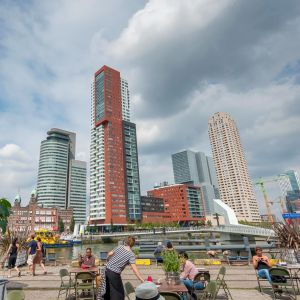Daan Zandbelt (De Zwarte Hond)
Daan Zandbelt is an architect, urbanist and partner at De Zwarte Hond, an office for architecture and urbanism that is based in Rotterdam, Groningen and Cologne. In the past year Daan led the IABR Projectatelier Rotterdam, the Productive City. In this atelier was explored, through research by design, how the Rotterdam region can develop a makers’ economy, with a team of L’AUC from Paris, marco.broekman from Amsterdam and De Zwarte Hond.
Besides De Zwarte Hond Daan works as an assistant professor at the chair of metropolitan design of the TU Delft . He lives with Eva in Rotterdam since the turn of the century.
Dirk van Peijpe & Florian Boer (DE URBANISTEN)
Dirk and Florian have a broad experience in the field of research, urban design and public space design. They practice an engaged polytechnical urbanism to improve the quality of life in our cities. DE URBANISTEN are currently involved in a wide variety of projects. For example: DE URBANISTEN devised the "water square": a plaza that functions as a play area, a floating grass field, a theatre and a place that can accommodate the water that would otherwise flood streets and inundate basements.
Florian, environmental designer, is educated at the departments of architecture and environmental design at the University of Eindhoven. He is a guest lecturer at the Academies of Architecture in Rotterdam and Amsterdam. Dirk, urban designer, studied urbanism at the Academy of Architecture and Urban Design in Rotterdam. He frequently lectures at Rotterdam Academy of Architecture and Urban Design. At the IABR, parts of their work are presented. Dirk and Florian are looking forward to tell you about it.
Monica Adams (Bekkering Adams Architects)
Monica Adams is architect/owner at Bekkering Adams architects, an internationally operating, dynamic and versatile architectural office, looking and working with an open mind towards our future society.
The office is founded by Juliette Bekkering and Monica Adams, who share a fascination for enhancing the urban environment. With an enthusiastic team of architects and designers they work on innovative and sustainable projects with a strong identity. The aim is to create projects that transcend the purely architectural and can surprise every time. Much attention is paid to the consistent development of the spatial concept. With a preference for natural and beautiful aging materials, the office looks for possibilities to combine idiosyncratic materials and a characteristic detailing with the elegance of natural elements and environmentally friendly techniques. Photo Ossip van Duivenbode
Francine Houben
Francine Houben is founder and creative director of Mecanoo. Her curriculum includes several projects in Rotterdam such as the Montevideo tower, Chapel St. Mary of the Angels, and the Nieuw Terbregge residential development. In Delft, she designed the new train station and the library of the Technical University. With Mecanoo, she is internationally renowned for the Library of Birmingham, the Bruce C. Bolling Municipal Building in Boston, and the National Kaohsiung Center for the Arts in Taiwan. Currently, she is working on renovation of the New York Public Library.
Francine became the director and curator of the first IABR in 2003 with ‘Mobility, a room with a view’ as theme. With this biennale Francine has brought mobility as part of our daily life under the attention. Francine’s contribution to the profession of architecture is widely recognized. She is a member of the Society of Arts in Amsterdam and was awarded the Prins Bernhard Cultuurfonds Prize for her entire oeuvre in 2015. Photo Christian Richters
Simone Drost (Simone Drost ARCHITECTURE)
Simone Drost studied architecture in Rotterdam and London. She started her office in Rotterdam in 1993; Drost + van Veen architects. Earlier, she worked with Michelle de Lucchi, Bruno Ninaber and Mecanoo architects. Her work can be found throughout the Netherlands as a wide range of projects. In Rotterdam her most well-known projects are ‘Plaswijckpark’ (a Theme Park for families), ‘Waternetpontons’ (stations for public transport over water) and the care centre ‘Maximaal’ (building for children who need special care in health and education).
Simone's life-long fascination for nature and landscapes often is the base of her designs. The theme that characterizes her work is the blending of architecture and landscape. Simone teaches at various institutes. Her partner in life is architect Theo Kupers. They live with their two daughters in the center of Rotterdam. Photo Roos Aldershoff.
Paul Lageschaar (Kühne & Co)
Paul Lageschaar is one of the architects at Kühne & Co. He started out studying architecture in Delft and is working at ‘Kühne & Co' since 1999. Lageschaar wants to contribute to the way the city operates. He specializes in building for ‘difficult environments’: mostly locations in the city with lots of framework conditions.
"We make use of restspace. We find sites in the middle of builded areas that seem to be forgotten. Our premise is that the new building has to add value to the neigborhood. An anonymus place or no go area could be transormed into something more attractive.” In his view, a design has to react very carefully to the environment. Integration of geothermal heat, rooftop parks and green facades are integrated in his designs if possible. Lageschaar lives and works in one of his own buildings: a unique design for a complex situation in Rotterdam. Photo Edwin Prins
Harmen van de Wal
Harmen van de Wal started Krill-O.R.C.A in 2000. Krill operates from one central vision: architecture only gets it’s value from the use people make of it, and this use will change over time. Krill invites people to intervene in its designs, just as Krill intervenes in their world.
Krill has been responsible for a number of excellent designs and realizations in which this vision is portrayed. Livability, sustainability, innovation are important concepts in the work of Krill. In order to realize these ambitions, Krill has collected a large network of renowned and highly professional experts on different disciplines, such as art, interior climate design, landscape architecture, and sociology. For every individual project a team will be put together consisting of the Krill core members and the experts needed. Recently an international team was put together to propose tools for desakota development in Indonesia, now being studied as a possible national Indonesian program, as well as for projects to alleviate slum areas with the use of social capital of the community.
Jeanne van Heeswijk (Afrikaanderwijk Cooperative)
Jeanne van Heeswijk is a visual artist who facilitates the creation of dynamic and diversified public spaces in order to radicalize the local. As an ‘urban curator’, van Heeswijk’s work often unravels invisible legislation, governmental codes and social institutions, in order to enable communities to take control over their own futures.
One of her current projects is the Afrikaanderwijk Cooperative with its central location the Gemaal op Zuid. A cooperative association that via self-organization improves the social and economical position of the Rotterdam Afrikaanderwijk. Photo JanssenAdriaans (Afrikaanderwijk Cooperatie, Acts of Balance)
Robert Winkel (Mei Architecten)
Robert Winkel (mei architects and planners) Robert Winkel founded Mei architects and planners in 2003 and is the office’s energetic leader. He is ambitious and enterprising both inside and outside the office. Fascinated by history, Robert regularly guides visitors around the Lloydkwartier area to talk about the origins and development of the Schiecentrale building, and the role played by Mei in its transformation. Because of the actual slow economy Robert is co-founder of the new development company White House Development.
Mei architects is an enterprising, knowledge-intensive office in Rotterdam. Mei is particularly noted for transforming existing buildings such as the Jobsveem warehouse, Delfshaven factory and Fenix warehouses in Rotterdam. The new McDonald’s pavilion on Coolsingel 44 designed by Mei has been published worldwide. The work of Mei received numerous accolades. Mei architects and planners is housed in the Schiecentrale. Visitors are welcome! Photo Jeroen Musch
Willemijn Lofvers
Willemijn Lofvers is an architect, presently working on her PHD-research (UGent) on the role of urban professionals (planner, designer) in contemporary urban developments, such as transition processes, self-organization, etc. Part of her research is executed through the performance of the Stadsklas. This ‘Learning by going’ program for both professionals and students is at the same time a course in innovative urban planning and an action research model. Arguing that these changing roles and the different skills that accompany them are best studied in practice through a collective learning process – as they are often formed and adjusted within very specific processes and the locality of these cases of urban transformation. She runs her office in one of these transition areas in Rotterdam. Willemijn represents the Academy of Architecture in Rotterdam in the network lectureship Future Urban Regions design research and urban transitions. She and her 15-year-old daughter are looking forward to have you as a guest! Photo: SK3 Den Haag ‘Making do’.
Susanne Komossa
Susanne Komossa studied architecture in Delft (NL) where she also obtained her PhD degree. Since 2004 she works as an associate professor at the Faculty of Architecture and the Built Environment, Delft University of Technology. There she heads the Architecture Research & PhD program ‘Architecture and City / Public Realm; composition & tectonics’. Moreover she teaches Master- and Graduation studies, theory seminars and lectures specifically on public building and colour in architecture. Internationally she operates as reviewer and lecturer. Next to these activities she is involved in conferences, for example the EAAE/ISUF ‘New Urban Configurations’ conference 2012, working on diverse publications and curating exhibitions like ‘The almost perfect urban block: towards a new urbanity’, the Dutch contribution to the 4rth Moscow Architecture Biennale 2014.(link)
Having run the architecture Rotterdam based firm Komossa architecten bna for almost 15 years at present she occasionally collaborates with young architects on private commissions. (link)
Marieke Hillen
Marieke Hillen initiates, coordinates and writes within the field of urban development. She tries to develop a form of slow criticism that keeps up pace with the slow urbanism of the projects she initiates. Hillen initiates projects that include locals, and works mainly in mixed neighbourhoods like Rotterdam-West. Singeldingen is a recurrent festival in the summer months. Encounters, music, experiments, poetry, educational projects, tea, coffee, cooks all play a role in an accessible event. Recently, she and others started the Wijkpaleis - a place to have it made. It is an emerging initiative that breathes new live into the makers culture that is existent in Rotterdam-West. It motivates people to broaden their horizon by making and considers the neighbourhood as a social library in which you can consult and utilize the capabilities and knowledge of neighbours.
Marieke Hillen is a wild thinker who not only builds theories but also realizes them. She starts unorthodox forms of cooperation and exchange. Her bottom-up initiatives create new views on society.
Dirk Jan Postel (Kraaijvanger)
Kraaijvanger creates environments that move people, where people work better, learn better, and enjoy themselves more. Such as public spaces, public buildings, and urban districts, where unique encounters occur, where beautiful memories are made, and where important decisions are taken.
The architecture office is actively involved from the initial sketch to the opening. And it still has the same carpenter's work ethic and focus on accuracy as it did at its founding in 1927, combined with all the knowledge, adaptability, and vision we've developed since then. The office is being lead by five partners. One of them is Dirk Jan Postel (1957). He was educated at Delft University of Technology. With a keen eye for detail and a thorough knowledge of materials (particularly regarding glass) he realized various projects like town halls, schools, a glass pavilion, a theater, a traffic center and embassy property. Transparency, spatial relationships and visual lines are essential elements in his design attitude. Photo Christian Richters
Jeroen Hoorn
The contemporary architect is a host. He’s well aware of who’s coming to visit. Does the guest want a short visit or a long stay? Will it be the suite or a bunk? The architect creates a room where the visitor feels at home, yet discovers new things. He also listens to the building. How to catch the essence of a place in the design? He ensures that the roof doesn’t leak and takes account of neighbours.
Jeroen Hoorn is an architect like that. His playfield is Rotterdam. You’ll find him at the topfloor of an empty newspaper building in the centre of town. This monument once housed dutch newspaper “Het Vrije Volk”. While designing a new future for this building he’s currently testing its potential together with his wife, the artist Wibbine Kien and his brother-in-law Rogier Kien who makes leather bags. You might know some of his work: Skatepark Pavilion Westblaak, restauration of the Atlantic Huis, Zes Pandjes Katendrecht or the soon to be built skyscraper Uptown. Photo: Thijs Wolzak
Daria Scagliola (ScagliolaBrakkee)
Daria Scagliola is a photographer, specialized in photography of architecture and environmental planning. Her partner in work is Stijn Brakkee, they work together since 1990 and started ‘ScagliolaBrakkee’ in 1998. Cooperations with architects often result in books or other publications. ScagliolaBrakkee sees exploration of context, light, spatial quality and purpose of a certain location as part of their projects.
Daria Scagliola teaches documentary photography at art-academy AKV St Joost (Breda). Her partner in life is Jannes Linders, also photographer of architecture. They live with their two daughters in the center of Rotterdam. Photo ScagliolaBrakkee
Juliette Bekkering (Bekkering Adams Architects)
Juliette Bekkering is Professor Architectural Design and Engineering at TU Eindhoven, and architect/founder at Bekkering Adams architects.
Bekkering Adams architects is an international, dynamic and versatile office, looking and working towards a future society with an open mind. Bekkering Adams architects has realized eye catching and iconic buildings such as the Booster Pump Station in Amsterdam, Esprit Benelux head office, a 24/7 operational fire station and the municipality offices of Rotterdam Feyenoord. Research about the potential of public playgrounds for the public domain resulted in a design for Public Playground at the Müllerpier, Rotterdam. In 2014 Juliette Bekkering and Monica Adams were invited to exhibit at the architecture Biennale in Venice. At this moment a school campus in a green park setting is being build in Peer, Belgium and a zero carbon building in Brussels. Photographer Daria Scagliola – Scagliola Brakkee Fotografie
Folkert van Hagen (GROUP A)
Folkert van Hagen is one of the co-founders of GROUP A Architects, founded in 1995 together with Maarten van Bremen and Adam Visser.
The office is an international collective of architects that functions as a design studio. At GROUP A we cherish and underpin these properties of pushing limits and sharing knowledge, of finding niche solutions and daring to stray from the beaten track. As one passionate team we aim to blend enthusiasm and maturity, experience and learning. Over time, these combined qualities have led to an unambiguous and clear GROUP A signature. And just like the Dragonfly, we shall continue to be alert to changing pinpricks in our environment and move alongside and in tandem with our clients and team. Photo Roos Aldershoff
Maartje Lammers (EARTHbound)
Maartje Lammers graduated from T.U. of Delft in 1988. Before starting her own office EARTHbound architecture she shared 24H architecture with Boris Zeisser. Furthermore Maartje Lammers worked in several well-known architectural offices like EEA (Erick van Egeraat), Mecanoo and OMA (Rem Koolhaas).
Maartje has been involved in various sized projects. Recently a number of projects have been realized or are under construction, such as a Villa in Cadzand, the Watertower in Domburg or the Environmental Education Centre in Assen (@24H). Currently EARTHbound is working on series of wooden houses in Rotterdam and a mini resort in the Phillipines. Being able to have realised all these wonderful procect on the most pristine and outstanding locations on this earth, my birthbround and homeland is my biggest accomplishment. In the 25 years of experience I have embedded my roots in learning, creating and building with nature and its inhabitants.
Tjeerd Wessel (Wessel van Geffen Architects)
Tjeerd worked for Sjoerd Soeters van Eldonk architecten and for Quist Wintermans architecten, mainly on big social housing projects mixed use. Two years ago he joined Stichting Mevrouw Meijer (re-use of schools from the 60's) and started his own office Wessel van Geffen Architecten with colleague Geertjan van Geffen (social housing, infrastructural works, commercial and industrial construction).
Tjeerd Wessel and Caroline Bijvoet are an architect's couple who live in a refurbished warehouse with south view on the river Maas, 7 minutes from the city centre. They met at Delft Technical University. One week before the end of the Berlin Wall they fell in love with each other and with the nicest profession they can think of.
David Dooghe
Fascinated by the relation between humans and their surroundings, David Dooghe studied architecture in Gent (BE), interior design in Eeklo (BE) and urban design in Rotterdam (NL) and Cottbus (D). Currently, he works as a researcher, strategist and designer on projects, which combine different scales and timeframes and are characterised by their strong connection with the spatial, cultural, social and economic context of where they occur. Together with Association Deltametropolis and its partners, Dooghe researches metropolitan development strategies in Europe. What can the Dutch learn from these international examples to develop their Metropolis NL? Festival City Roytterdam, Dooghe’s urban design graduation project, was an urban strategy on the symbiotic collaboration between festivals and urban development. Dooghe’s love for design can be felt in the DDR’dam project. Photo Jeroen Musch
Michiel Riedijk (Neutelings Riedijk Architects)
Michiel Riedijk (Geldrop, 1964) is, with Willem Jan Neutelings, partner and principal architect of Neutelings Riedijk Architects.
Since the founding in 1992 Neutelings Riedijk Architects has realized multiple iconic private and public buildings like the City History Museum MAS in Antwerp, the Netherlands Institute for Sound and Vision in Hilversum, the Shipping and Transport College in Rotterdam and recently the Rozet Culturehouse in Arnhem and the Eemhuis in Amersfoort. Neutelings Riedijk is currently working on various projects including the Spuiforum Concerthall in The Hague and the Naturalis Biodiversity Museum in Leiden.
Michiel Riedijk lectures and teaches regularly at universities, academies and cultural institutions worldwide. Since September 2007 he is Chair of Public Building & Architectural Compositions of the Architectural Faculty of Delft University of Technology. Photo Scagliola/Brakkee
Simone Rots (Crimson Architectural Historians)
Simone Rots (1969) is an architectural historian and partner of Crimson Architectural Historians (www.crimsonweb.org). Crimson works, writes, advises and teaches in the field of urban planning and architecture, combining historical research and the production of projects. Recently Crimson was involved in the 6th Bi-City Biennale of Urbanism Architecture Shenzhen, China with the exhibition’ Do you hear the people sing?’ and part of the exhibition ‘Food, from spoon to the world’ at the Maxxi Museum in Rome, Italy. Simone Rots was the director of Hofbogen BV and responsible for the 1st phase of the transformation of this 19th century monumental train viaduct. She is part of the staff of the International New Town Institute, which is a think and do tank for young cities (www.newtowninstitute.org) addressing the development of new towns world-wide. At the moment she is working on her Phd on the topic of planned and unplanned cities. Together with her husband, photographer Maarten Laupman, and their son she lives in a transformed ambulance-garage in Rotterdam. Photo Maarten Laupman
Caroline Bijvoet
Caroline Bijvoet started her own practice 19 years ago and has built many small projects, a.o. a temporary restaurant from sea-containers, and private housing.
Tjeerd Wessel and Caroline Bijvoet are an architect's couple who live in a refurbished warehouse with south view on the river Maas, 7 minutes from the city centre. They met at Delft Technical University. One week before the end of the Berlin Wall they fell in love with each other and with the nicest profession they can think of. Photo Scagliola/Brakkee
Marc Verheijen
Marc Verheijen was lucky to choose the wrong education! As a traffic engineer he discovered there was more than organising flows. Getting his master degree in architecture gave him the advantage of a dual education. As a designer with traffic engineering and an architectural background, he developed a wide range of experiences in the world port city of Rotterdam. He has a unique view on design of infrastructure and public facilities. Interrupted with a two year sidestep as chef de bureau at OMA, he has been working for more then 25 years for the city of Rotterdam. Originally as a designer of infrastructure, lately as the city architect. His practice consists of designing bridges, subway stations, schools, etc, and advising on architectural selections, architecture policy, master planning, etc. He combines this position with a position as professor of infratecture, integral design of infrastructure, at the Rotterdam University of Applied Science at the RDM-campus. In his world, infrastructure is an integral part of society that we create and design together. Photo Marc Verheijen
Wessel de Jonge
Wessel de Jonge (1957) graduated in architecture at TU Delft, where he is the present professor in Heritage & Design. His studio has international recognition in adaptive re-use of recent architectural heritage. The master-planning of the Van Nelle Design Factory is probably his best known achievement. Other projects in Rotterdam include the conversion of the Jobsveem warehouses into apartments (with Mei architects), the Pincoffs Hotel and the HUF building.
He is currently involved with the former prison complex, the Forum Rotterdam shopping centre (with OMA), the rehabilitation of the 1958 Cité Modèle in Brussels, and the Helsinki Olympic Stadium (1938). Understanding place and history is part of our philosophy regarding the sustainability of our environment. In an architecture that is lucid and subtle, with sophisticated choices of materials and details, spaces are created where the occupants feel at ease. Wessel and his friend welcome you in their converted 19C town-house in the West of Rotterdam. Photo Raoul Suermondt
Thijs Barendse & Sereh Mandias / De Dependance
Thijs Barendse studied political science in Amsterdam and Brighton. Since 2010 he works in Rotterdam as a programmer for cultural institutions and festivals. He is editor in chief of the Rotterdam Late Night Talkshow. Sereh Mandias studied architecture (TU Delft) and philosophy (EUR) and in her work she oscillates between the two. She works as a teacher at the faculty of Architecture (TU Delft) and as a writer/editor for (among others) Vers Beton and online Rotterdam magazine.
In 2015 Thijs and Sereh took over De Dépendance, platform for city culture. De Dépendance was founded in 2009 by ZUS as catalyst for the development of the Schieblock, an office building listed for demolition. Seven years later the building has been succesfully transformed. De Dépendance is now programming the vacant Hofpoort. Here De Dépendance organizes exhibitions, debates and talks on global urban, societal, economic and political issues and the way these issues manifest themselves in the city.
Martin Aarts
Martin Aarts studied Architecture in Delft (NL). He shortly worked at OMA and also shortly had his own office. Since 1984 he is working at the municipal urban planning authority of Rotterdam, where he has been managing the development of the Rotterdam centre. Since 2005 Martin is head of the department of spatial planning, and works as strategic advisor spatial planning.
Martin is a teacher at the Academy of Architecture in Rotterdam and at the Technical University in Delft. Martin and his wife Susanne Komossa live in the beautiful 'Provenierswijk' and are looking forward to welcome their guests.
Patrick van der Klooster
Since 2005 Patrick van der Klooster is director of AIR, the Architecture Institute of Rotterdam. AIR organizes the public and professional debate on the city and its external manifestation.
Patrick studied social and economic history at the University of Utrecht. He worked at the urban design office of Riek Bakker, at organization consultancy office De Beuk and at the national culture board, where he advised on the national policy towards architecture.
Patrick and his wife are looking forward to tell you more about Rotterdam!
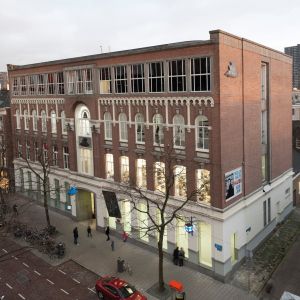
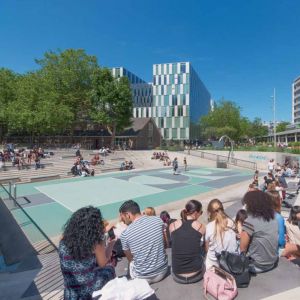
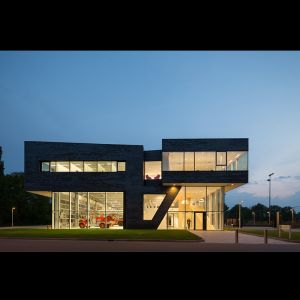
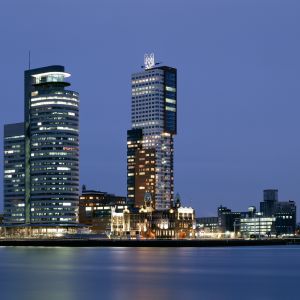
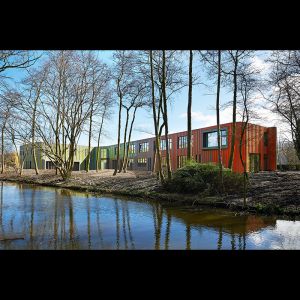
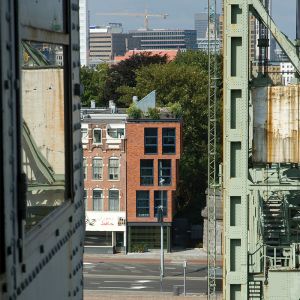
_thumb.jpg)
_thumb.jpg)
_thumb.jpg)
 kopie_thumb.jpg)
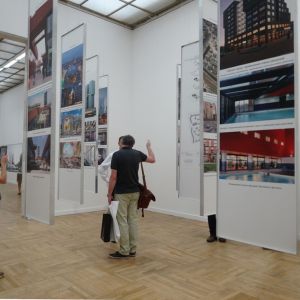
 kopie_thumb.jpg)
Dirk Jan Postel Photo Christian Richters 2_thumb.jpg)

Daria Scagliola Foto_ScagliolaBrakkee_omslag_4012-004_thumb.jpg)
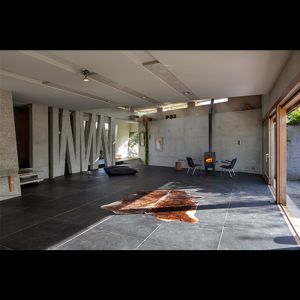
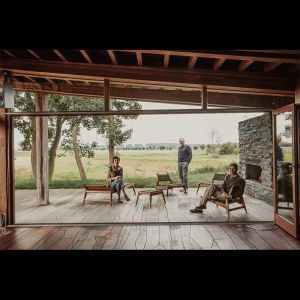
Tjeerd Wessel vierkant_thumb.jpg)
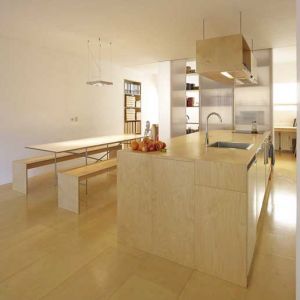
Michiel Riedijk_thumb.jpg)
Caroline Bijvoet kopie_thumb.jpg)
2013-11-07 15.19.22_thumb.jpg)
IMG_9943 kleiner_thumb.jpg)
_thumb.jpg)
_thumb.jpg)
